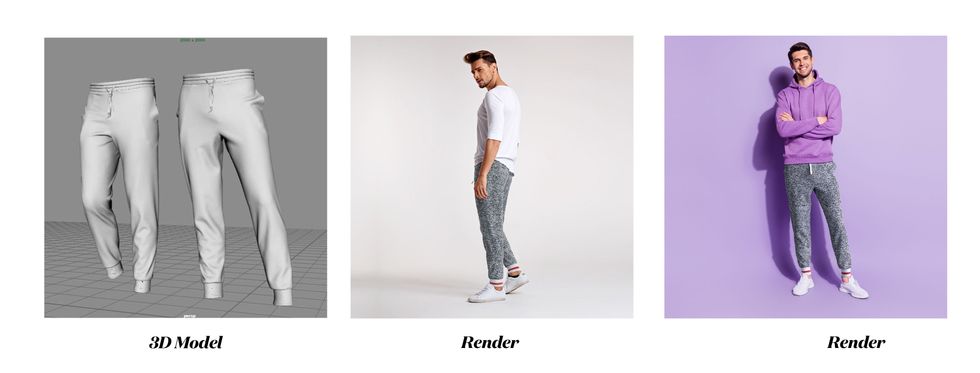Operations
04 January 2023
New ecommerce return options: Pickup, box-free, store drop-off
New options balance customer experience, operational imperatives and environmental concerns.

(Photo courtesy of FedEx)
New options balance customer experience, operational imperatives and environmental concerns.

(Photo courtesy of FedEx)
With the holidays moving to the rearview and a new year upon us, returns season is in full swing. As the refunds and exchanges come in, the companies that power ecommerce are rolling out new ways for customers to more easily send items back.
Returns have grown right alongside ecommerce over the last several years. While the National Retail Federation projected a decrease in the online return rate for 2022 from 20.6% to 16.5%, there are signs that the 2022 holiday shopping season is bringing an influx. Salesforce predicted a returns “tsunami” for the season, while Loop saw DTC brands using its platform saw records.
Returns are a tricky area for brands. On the one hand, offering flexible policies like free returns and home try-on allows brands to offer a great experience. But returns also present logistics challenges and can eat into profitability. Hanging over all of it is the environmental consideration of using less packaging, reducing waste and lowering transportation mileage.
With innovation, the goal is to strike a balance between these interests. Below are three examples of how ecommerce platforms and logistics companies are creating new ways to make returns, and what they mean for consumer, business and climate imperatives.
The details: On Wednesday, on-demand delivery marketplace DoorDash debuted its hack for returns: A driver will bring a prepaid package to a local UPS, FedEx or USPS location. Called Package Pickup, the feature is accessible on the DoorDash homepage, and the service will deliver up to five packages per $5 order.
What it addresses: For consumers, this is all about convenience. They already didn’t have to leave home to shop for an item, and now they don’t have to leave home to make a return. On the logistics side of the equation, it positions DoorDash at a point between carriers and consumers. Undoubtedly, the service is helping DoorDash unlock new ways to use its platform. But it also could help to solve problems for carriers and logistics operations that are facing heavy volumes of returns.
The details: Starting this year, FedEx will allow consumers to drop off items at one of 2,000 FedEx Office locations without a box or label. Returns will be processed using a QR code. Called FedEx Consolidated Returns, the option will be available through participating merchants. FedEx will consolidate the items with returned products from others, then routed to send back to merchants.
What it addresses: For consumers, this removes two steps from the returns process: packing a box and printing label. In the case of finding a box, it also removes what is usually a hassle. For brands and retailers, FedEx touts that it is a low-cost returns service that provides a way to offer a good experience to merchants. By putting returns together and optimizing transportation, it could also use less energy than a single-package return.
The details: As the market share leader in ecommerce, Amazon has also made logistics a key part of its operations. It has continuously innovated to balance customer experience, and solve its own challenges in the movement and delivery of goods. In a recent post, the company shared its own existing box-free return program that is activating its network of stores, and partnering with others. This service allows consumers to get a QR code through the Return Center on its site. Then, they can drop off an item at Amazon physical stores, Whole Foods, Kohl’s or UPS Store locations. Some Staples locations were also added as a drop-off point over the holidays.
What it addresses: Amazon was one of the earliest companies to offer free returns, and box-free returns only adds to the ease of that process. It’s worth noting that there are actually two returns innovations here: box-free returns and expanded drop-off points to stores outside of Amazon's network through partnerships. Customers benefit from both in the form of easier returns. Meanwhile, stores get a visit from shoppers who may be apt to buy something else as they make a drop. This means retailers may have opportunities to merchandise around the dropoff points. Call it buy online, drop off in store.
Innovation will keep pushing consumer expectations forward. Free returns were already becoming table stakes. The latest developments indicate that a wider number of options to get items back to retailers – particularly box-free returns – could follow.
Amazon partnered with Hexa to provide access to a platform that creates lifelike digital images.
A 3D rendering of a toaster from Hexa and Amazon. (Courtesy photo)
Amazon sellers will be able to offer a variety of 3D visualizations on product pages through a new set of immersive tools that are debuting on Tuesday.
Through an expanded partnership with Hexa, Amazon is providing access to a workflow that allows sellers to create 3D assets and display the following:
Selllers don't need prior experience with 3D or virtual reality to use the system, according to Hexa. Amazon selling partners can upload their Amazon Standard Identification Number (ASIN) into Hexa’s content management system. Then, the system will automatically convert an image into a 3D model with AR compatibility. Amazon can then animate the images with 360-degree viewing and augmented reality, which renders digital imagery over a physical space.
Hexa’s platform uses AI to create digital twins of physical objects, including consumer goods. Over the last 24 months, Hexa worked alongside the spatial computing team at Amazon Web Services (AWS) and the imaging team at Amazon.com to build the infrastructure that provides 3D assets for the thousands of sellers that work with Amazon.
“Working with Amazon has opened up a whole new distribution channel for our partners,” said Gavin Goodvach, Hexa’s Vice President of Partnerships.
Hexa’s platform is designed to create lifelike renderings that can explored in 3D, or overlaid into photos of the physical world. It allows assets from any category to be created, ranging from furniture to jewelry to apparel.

The result is a system that allows sellers to provide a new level of personalization, said Hexa CEO Yehiel Atias. Consumers will have new opportunity see a product in a space, or what it looks like on their person.
Additionally, merchants can leverage these tools to optimize the entire funnel of a purchase. Advanced imagery allows more people to view and engage with a product during the initial shopping experience. Following the purchase, consumers who have gotten a better look at a product from all angles will be more likely to have confidence that the product matches their needs. In turn, this can reduce return rates.
While Amazon has previously introduced virtual try-on and augmented reality tools, this partnership aims to expand these capabilities beyond the name brands that often have 1P relationships with Amazon. Third-party sellers are an increasingly formidable segment of Amazon’s business, as they account for 60% of sales on the marketplace. Now, these sellers are being equipped with tools that enhance the shopping experience for everyone.
A video displaying the new capabilities is below. Amazon sellers can learn more about the platform here.
Hexa & Amazon - 3D Production Powerhousewww.youtube.com